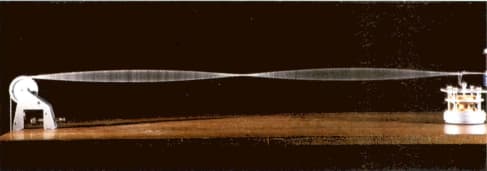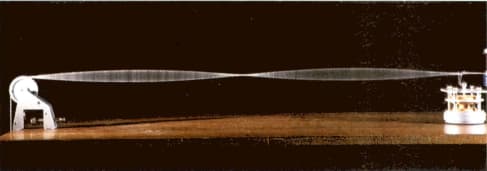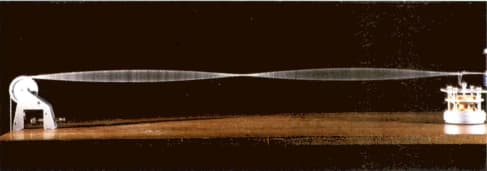David Sang and Graham Jones Solutions for Chapter: Stationary Waves, Exercise 2: Questions
David Sang Physics Solutions for Exercise - David Sang and Graham Jones Solutions for Chapter: Stationary Waves, Exercise 2: Questions
Attempt the free practice questions on Chapter 14: Stationary Waves, Exercise 2: Questions with hints and solutions to strengthen your understanding. Physics for Cambridge International AS & A Level Coursebook 3rd Edition Digital Access solutions are prepared by Experienced Embibe Experts.
Questions from David Sang and Graham Jones Solutions for Chapter: Stationary Waves, Exercise 2: Questions with Hints & Solutions
Look at the stationary (standing) wave on the string in Figure. The length of the vibrating section of the string is 60cm.

The frequency of vibration is increased until a stationary wave with three antinodes appears on the string.
(a) Determine the wavelength of the progressive wave and the separation of the two neighbouring antinodes.
Look at the stationary (standing) wave on the string in Figure. The length of the vibrating section of the string is 60cm.

(b) Sketch a stationary wave pattern to illustrate the appearance of the string.
Look at the stationary (standing) wave on the string in Figure. The length of the vibrating section of the string is 60cm.

(c) Calculate the wavelength of the progressive wave on this string.
(a) Sketch a stationary wave pattern for the microwave experiment. Whether there is a node or an anti node at the reflecting sheet.
(b) The separation of two adjacent points of high intensity is found to be 14 mm. Calculate the wavelength and frequency of the microwaves.
